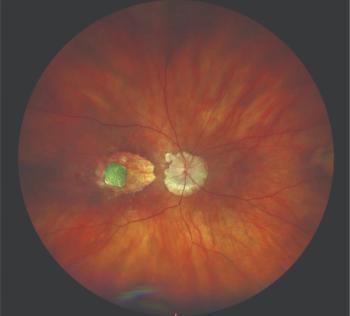
Reichert demonstrates the importance of corneal hysteresis
The measurement of corneal hysteresis can play an important role in corneal pathologies and refractive surgery in an effort to improve patient outcomes. In a breakfast meeting Sunday, Reichert Ophthalmic Instruments presented a panel of physicians and scientists to discuss the principles of corneal biomechanical properties and the role of the company's Ocular Response Analyzer (ORA) in measuring corneal hysteresis.
The measurement of corneal hysteresis can play an important role in corneal pathologies and refractive surgery in an effort to improve patient outcomes. In a breakfast meeting Sunday, Reichert Ophthalmic Instruments presented a panel of physicians and scientists to discuss the principles of corneal biomechanical properties and the role of the company's Ocular Response Analyzer (ORA) in measuring corneal hysteresis.
Cynthia Roberts, PhD, of Ohio State University explained the actual science of corneal biomechanics as a next-generation diagnostic tool. She cited the importance of corneal biomechanics and how understanding these measurements could improve refractive outcomes and identify patients at risk of ectasia.
Sunil Shah, MBBS, FRCS(Ed) FRCOphtd, of the United Kingdom continued the discussion by comparing hysteresis in normal and keratoconus eyes. He outlined a study that looked at IOP and hysteresis. Shah found that thinner eyes tend to have less hysteresis.
Through earlier studies, hysteresis tends to be much lower in keratoconus eyes and does not necessarily correlate with corneal thickness.
Shah then presented clinical data from a study that assessed change in hysteresis following refractive surgery and to assess the differences of hysteresis between LASEK and LASIK. The study looked at 80 eyes in 41 patients (35 eyes underwent LASEK, 45 underwent LASIK). The study found that hysteresis changed significantly from preoperative to postoperative in both procedures. However, IOP and corneal thickness changed very little.
Jay Pepose, MD, of Chesterfield, MO, took the science of corneal hysteresis and biomechanics and applied it to the clinical arena. Dr. Pepose explained how the use of the ORA and how the hysteresis measurements are applied in corneal pathologies and refractive surgery.
Dr. Pepose also explained how the ORA diagnoses corneal diseases, such as Fuchs' Syndrome and keratoconus. He pointed out that the biomechanical factors used with the ORA provide more metrics than pachymetry. He added that ORA is used to look at the effects of flap-creation and ablation depths.
Renato Ambrosia Jr., MD, of Rio de Janeiro, Brazil, explained the relevance of corneal biomechanics in relation to the cornea and refractive surgery. He said that understanding corneal biomechanics assists in preventing complications, increase safety, and improve outcomes in refractive surgery.
Dr. Ambrosia also outlined how corneal biomechanics can be used for corneal diseases (diagnosis, staging, and prognosis), refractive surgery (screening, planning, and understanding outcomes), and glaucoma (accurate IOP).
Newsletter
Don’t miss out—get Ophthalmology Times updates on the latest clinical advancements and expert interviews, straight to your inbox.





